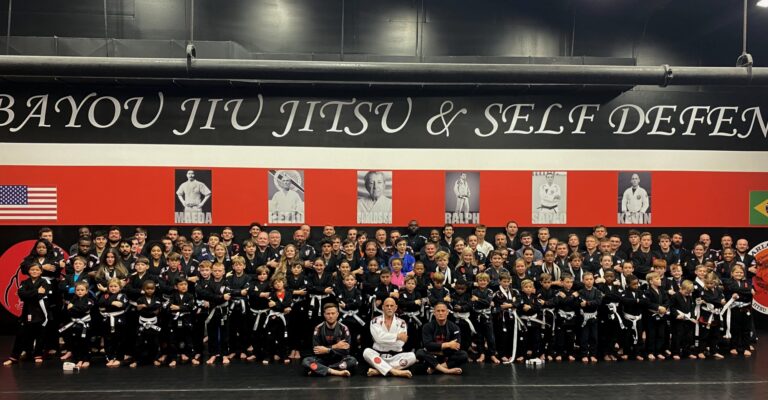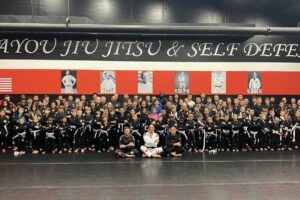MARTIAL ARTS ACADEMY Bayou Jiu Jitsu is a friendly martial arts academy with loctions in Baton Rouge and Central, Louisiana....
Judo
Judo is a modern Japanese martial art and Olympic sport that was developed in the late 19th century by Jigoro Kano. It is characterized by its emphasis on throwing techniques and ground grappling. Judo, which means “gentle way” in Japanese, places a strong emphasis on using an opponent’s force and balance against them. Here’s an overview of the sport:
Basic Principles and Techniques:
- Throws (Nage-Waza):
- Judo is renowned for its throwing techniques, where practitioners aim to off-balance their opponents and throw them to the ground. Throws are executed using various grips and grips, and they require precise timing and leverage.
- Groundwork (Ne-Waza):
- Once on the ground, judoka (practitioners) employ ground grappling techniques to control, pin, or submit their opponents. Joint locks and strangles are common in ne-waza (groundwork).
- Offensive and Defensive Techniques:
- Judo includes a wide array of techniques for both offense and defense. The art emphasizes adapting to an opponent’s movements and using their energy against them.
Rules and Scoring:
- Ippon:
- The highest score in Judo is called “ippon,” which is awarded for a perfect throw or a successful pin or submission on the ground. Winning by ippon results in an immediate victory, and the match is concluded.
- Waza-Ari and Yuko:
- If a throw is not perfect but still effective, judges may award a lower score, either waza-ari or yuko, depending on the impact of the technique. Accumulating enough lower scores can also lead to victory.
- Penalties (Shido):
- Penalties are given for rule infractions or lack of engagement. Accumulating penalties can result in a win for the opponent.
Weight Classes:
- Weight Divisions:
- Judo competitions are organized into weight classes to ensure fairness. This system allows practitioners to compete against opponents of similar size and weight.
Judogi (Judo Uniform) and Etiquette:
- Judogi:
- Judo practitioners wear a traditional uniform called a judogi, which consists of a jacket, pants, and a belt. The color of the belt signifies the practitioner’s rank.
- Etiquette and Bowing:
- Judo places a strong emphasis on etiquette and respect. Practitioners bow before and after training, competitions, and when entering or leaving the mat area.
Promotion and Belt System:
- Belt Progression:
- Judo uses a colored belt system to denote the practitioner’s skill level and experience. The order of belts, from beginner to advanced, typically includes white, yellow, orange, green, blue, brown, and black.
- Promotion Criteria:
- Advancement through the belt ranks is based on technical proficiency, knowledge of Judo principles, and time spent training. Each belt has specific requirements for promotion.
Competitions and Tournaments:
- International and National Events:
- Judo is practiced worldwide, and international competitions, including the Olympic Games, showcase top-level judoka. National and regional tournaments are also common.
- Scoring in Tournaments:
- In Judo tournaments, participants compete in a bracket-style format, aiming to progress through rounds by scoring points or achieving ippon.
Benefits and Philosophy:
- Self-Defense and Discipline:
- Judo emphasizes the practical application of techniques for self-defense. The training also instills discipline, respect, and a sense of responsibility.
- Physical Fitness:
- Judo provides a full-body workout, enhancing strength, flexibility, and cardiovascular fitness.
In summary, this martial art syle is a dynamic martial art that combines throws, groundwork, and a strong emphasis on respect and discipline. With a rich history and a global presence, Judo is not only a competitive sport but also a way of life for many practitioners.





